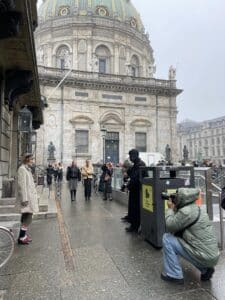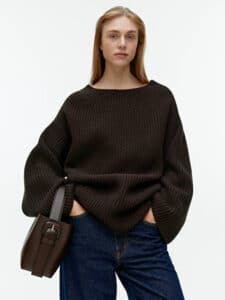Fashion Films, but Not as We Know Them!
When it comes to fashion films, The Devil Wears Prada is the film that first springs to mind, no doubt. If we set aside Hollywood movies, we can secretly take a look inside the fashion world and how the industry functions. We can learn how about the ways a piece of clothing could define a new era or even the way we dress today therewithal. For our article we selected fashion films people hardly ever talk about, but were epoch-making in their own right and had a lasting impact on the fashion industry.
Yves Saint Laurent (2014)
YSL is a brand name that might sound familiar to many of you. But the question is who is behind the iconic french fashion house? The French biopic follows Yves Saint Laurent’s over a decade-long career. The year is 1957 and Yves Saint Laurent becomes Christian Dior’s assistant at just 21 years old. Thanks to his haute couture collection, he finds himself in the centre of interest in the fashion industry. He ditches conventional formalities and rigorous structures. Saint Laurent is celebrated more or less as a fashion revolutionary. The film presents episodically the designer’s career, his controversial dismissal from Dior, and his lifelong and – at times – troubled relationship with Pierre Berge. Fashion enthusiasts will enjoy this film because the costumes and the atmosphere of the early years ooze French elegance.


Blow Up (1966)
When it comes to the New Wave as an art film movement, Michelangelo Antonioni’s name cannot go unnoticed. He managed to make a starter base for the trend of the New Wave films and gave the audience a new perspective on cinema. The Blow Up was adapted from Julio Cortázar’s short story and debuted in 1966. Antonioni’s cult film follows a fashion photographer who unintentionally witnesses a murder through his camera lens. When developing and zooming in on the photos, the murder gets played out again on the studio walls. The film immaculately inherits the 60s style, and the vigilant eyes can spot young Jane Birkin in the cast. Antonioni’s film not only documented an era but also changed the way we dress.
Dior et Moi (2014)
At first, the mention of a documentary might be frightening, but if it is about a heritage house with more than 80 years of history, sounds more promising. The film records how Raf Simons, the newly announced creative director, takes over the globally-renowned luxury brand. Simons is a Belgian fashion designer who first gained recognition for his minimalist-inspired eponymous menswear label. As the new creative director, he has to finish his first haute couture collection in 8 weeks. Thanks to the film, we get insight into how a fashion house works, what the dressmaking process looks like, and what it takes to put together a collection and make it succeed. Finally, we can witness how a documentary becomes an enticing fashion film.


The September Issue (2009)
If we are talking magazines, then Vogue is the one. No ifs and or buts. But how does the production process work? In the history of Vogue, the September issue is the most important and largest issue of the year. The September issue 2007 broke records with 840 pages and weighing 1.8 kg. The documentary lets us sneak a peek at the making of a magazine. The film presents the editor in chief of Vogue, Anna Wintour, while trying to reveal the secret of her personality working magic. We have the opportunity to take a behind-the-scenes look inside the Vogue office and the exhausting, but passionate process that precedes the publishing of a new issue. Vogue is the Fashion Bible of this global industry.
Pierre le Fou (1967)
Or Pierrot the Fool in English. Those who call themselves film buffs must be familiar with Jean-Luc Godard’s name. Godard is one of the most prominent figures of the French New Wave. His films come to life by the use of things that simultaneously stimulate our senses, like posters, letters, colours, songs, names, faces, music and paintings. The sensory components of the plot become symphonically recomposed. Pierre le Fou is a crime by genre and thus you might ask why are we even talking about it in an article about fashion films. The female lead is none other than the style icon Anna Karina, on- and off-screen. The film takes place on the French Riviera and delivers a style guide to dressing like an elegant, but sometimes bohemian French woman. The vibrant colours, the notable range of clothing materials and lots of cigarettes – as an accessory – captivate us, and we instantly find ourselves in the world of Godard’s.

Photo source: Harper’s BAZAAR
We hope that we set your mood for watching the fashion films above: binging the ones haven’t seen before, or re-watching the others you have already seen. These fashion films might be able to inspire your daily life in their way. Tell us which one was your favourite!




